
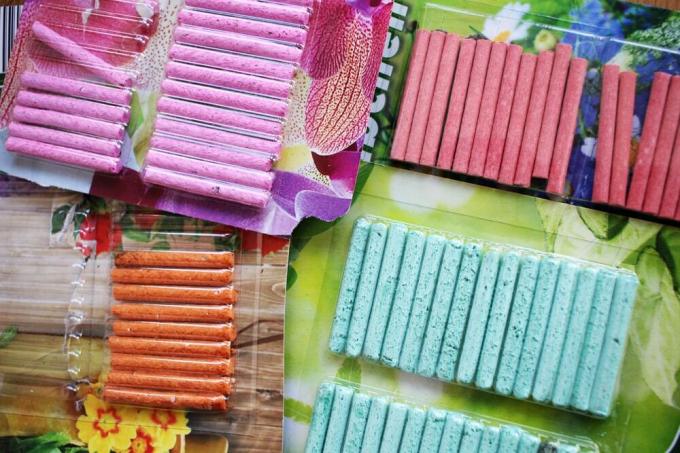
Table of contents
- Fertilizer sticks - ideal for potted plants
- preliminary considerations
- Application
- Advantages of fertilizer sticks
Space-saving, practical and easy to use - fertilizer sticks are also becoming increasingly popular with hobby gardeners. The small sticks contain the plant nutrients in an optimal dosage; the individual substances are released over a longer period of time, so that there is no need to add fertilizer. However, there are many different fertilizer sticks on the market today; only those who choose the right variety for their plants and use them correctly will benefit from all the advantages of the fertilizer.
Fertilizer sticks - ideal for potted plants
In principle, the use of fertilizer sticks is worthwhile for almost all plants. However, hobby gardeners in particular benefit from this special supply of nutrients, who have chosen the following locations for their plants:
- windowsill
- balcony
- terrace
- Bucket attitude
The advantages of these plants are obvious: Due to the limited volume of soil in the individual plant pots, dosing with a liquid fertilizer is often correspondingly more complex; the fertilizer sticks, on the other hand, can be optimally dosed. In addition, there is no need for annoying re-fertilization.
preliminary considerations
If you want to fertilize with sticks, you should think carefully about your individual application requirements in order to achieve an optimal result. First of all, the question has to be clarified whether it is flowers or edible plants, for example herbs or tomatoes. If you only want to fill a balcony box with spring or summer flowers, you can use conventional, mineral fertilizer sticks for flowers.
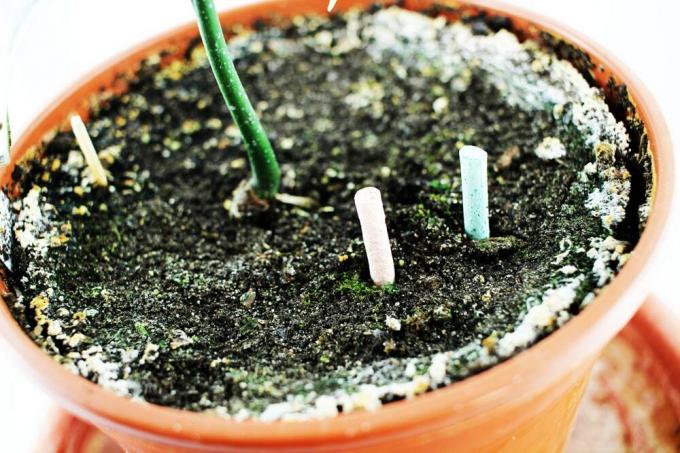
On the other hand, if the hobby gardener wants to harvest his own vegetables, preference should be given to organic fertilizers; certain manufacturers offer fertilizer sticks specifically for this purpose. If you choose an organic fertilizer stick, the second step is to consider how the fertilizer should be composed; for example, a tomato requires many more nutrients than a chive plant. Therefore, different fertilizer sticks are available, which are composed differently, for example for:
- Herbs (usually weak consumers with an overall low nutrient requirement)
- Tomatoes, peppers, chillies (heavy eaters that require a high concentration of nutrients)
- Citrus fruits (requires a special Mediterranean nutrient mix)
A notice:
It doesn't matter which fertilizer stick is finally used: the fertilization must never be applied to very young plants!
Freshly planted plants are usually optimally supplied with nutrients for four to six weeks; Anyone who uses the fertilizer sticks too early therefore risks oversupplying the plants, which can have a damaging effect.
Application
If the hobby gardener has decided on a fertilizer stick and has waited for the young plant phase, the nutrient cocktail can be used. The application is very simple: The sticks are completely removed from their outer packaging and then inserted deep into the ground. The fertilizer should be placed in close proximity to the roots; only in this way is the stick able to release the nutrients it contains in a targeted manner. If placed too far from the roots, the nutrient cocktail loses some of its effectiveness.
The following aspects must be observed when using the fertilizer sticks:
- Stick sticks into the ground 15cm apart
- Put no more than 2 sticks per plant at the beginning of the season
- when fruiting, another stick can be added
Advantages of fertilizer sticks
Long-term effect of a balanced nutrient cocktail
In terms of nutrient content, fertilizer sticks have all the advantages that liquid fertilizers also offer; they activate the natural growth potential of the plants, ensure lush flowers, bright colors and sustained fruit production. At the same time, the hobby gardener achieves increased plant resistance through the correct use of fertilizer sticks.
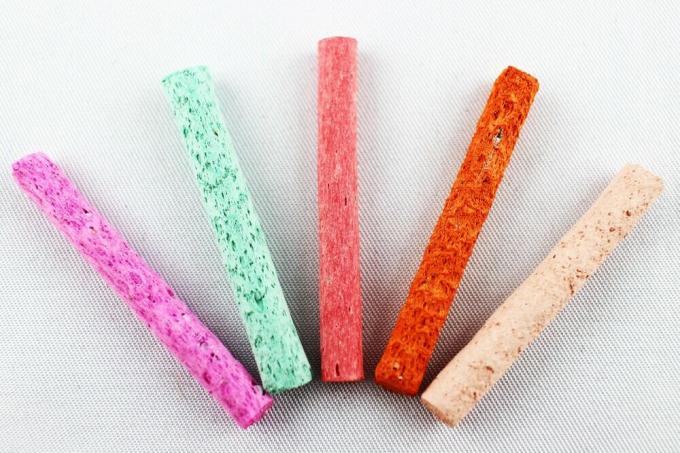
It contains the important substances phosphorus, nitrogen and potassium; while nitrogen is necessary for vigorous growth, phosphorus promotes the development of roots, flowers and fruit. Potassium is responsible for increasing the resistance of the plant. Depending on the type of fertilizer sticks, minerals and trace elements such as iron, sulfur and calcium are sometimes also added.
Compared to conventional liquid fertilizers, however, fertilizer sticks offer the advantage that they release the nutrient mix slowly and over a longer period of time; In this way, the hobby gardener saves time, since there is no need for annoying re-fertilization. As a rule, the nutrients in the sticks last for a period of more than three months.
No risk of overdose
Liquid fertilizers must always be measured accurately; this is usually cumbersome, since the required amounts have to be recorded with a measuring cup, for example. In addition, precise dosing is often not possible in this way, so there is a risk of overdosing.
The fertilizer stick, on the other hand, offers the following advantages:
- exact amount of nutrients contained in the stick
- no writing required
- There is no need to discard leftover fertilizer
Practical handling
Handling the fertilizer sticks is particularly easy and practical; the nutrient mix is extremely space-saving, since the sticks are usually small and very compact. In this way, they take up much less space on the shelf than, for example, the fertilizer bottles. The application is quick and easy; no special knowledge or dexterity is required.
Various purposes can be combined
Fertilizer sticks are not only used for the targeted supply of nutrients; rather, the addition of additional nutrients provides further effects that benefit the plant. For example, fertilizer sticks may contain a fungicide that helps fight fungal diseases. The combination of the fertilizer with an insecticide is also popular, so that the treated plants are then less susceptible to lice and other pests.
But no matter which product the hobby gardener chooses: with every fertilizer stick you achieve improved growth and more robust health of the plant. In this way, the hobby gardener can enjoy his plants for a particularly long time - in a simple and convenient way!
 garden editorial
garden editorial I write about everything that interests me in my garden.
Learn more about fertilizer

Lawn lime: Lime against moss in the lawn
As soon as moss appears in the lawn, many a hobby gardener becomes restless - because soon the moss carpet can take over entire areas. With lawn lime, however, the unwelcome visitor can be skilfully put in his place.

Build your own Bokashi bucket | DIY instructions
Most of the kitchen waste goes on the compost or in the organic bin to add it back to nature's cycle. But there is a way to gain valuable fertilizer beforehand. We show how easy it is to build a Bokashi bucket and use it to obtain liquid fertilizer on the balcony or even in the apartment.
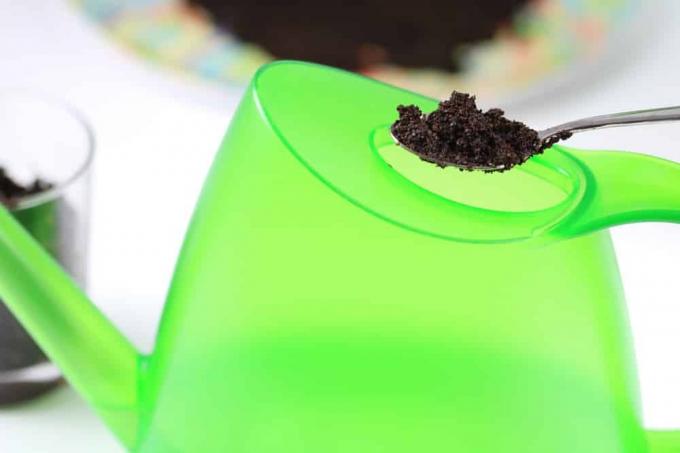
These 8 plants don't like coffee grounds as fertilizer
Hobby gardeners swear by the effect of the coffee grounds. It is fertilizer, snail protection, soil conditioner and cat deterrent all at the same time. In addition, it is free of charge and occurs daily in the household. Most plants are strengthened, but some are sensitive to the addition of coffee. We clarify.

Fertilize Christmas roses properly: 11 effective home remedies
Christmas roses are special flowers because, unlike almost all other perennials, they bloom in winter. They are insensitive and frost-hardy, and they can also multiply independently. Here you can find out what needs to be considered when fertilizing.
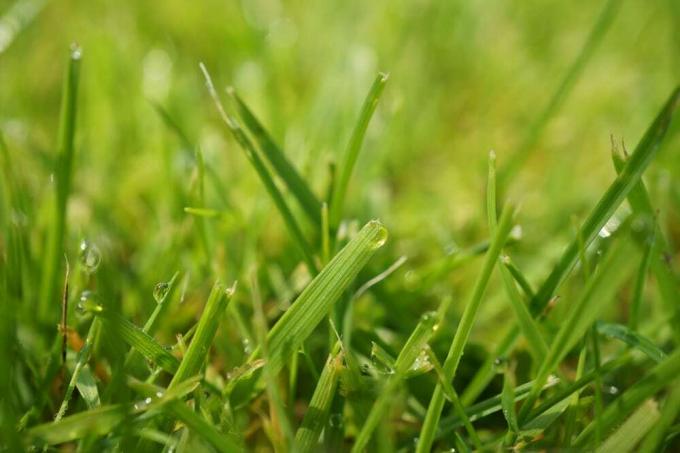
Lawn Bokashi: 6 steps to a cheap & natural fertilizer
The name Bokashi is still largely unknown. This method of using grass clippings comes from Japan. With a little preparation and a special form of processing, the clippings become valuable, nutrient-rich fertilizer that can be easily distributed in the garden.

Wood ash as fertilizer | These 70 plants love barbecue and charcoal
Home gardeners with a fireplace or tiled stove receive a natural fertilizer for free. Charcoal and charcoal leave behind a dusty residue that is packed with valuable nutrients. Read here under what conditions wood ash is suitable as a fertilizer. These 70 plants benefit from the unorthodox nutrient supply.



